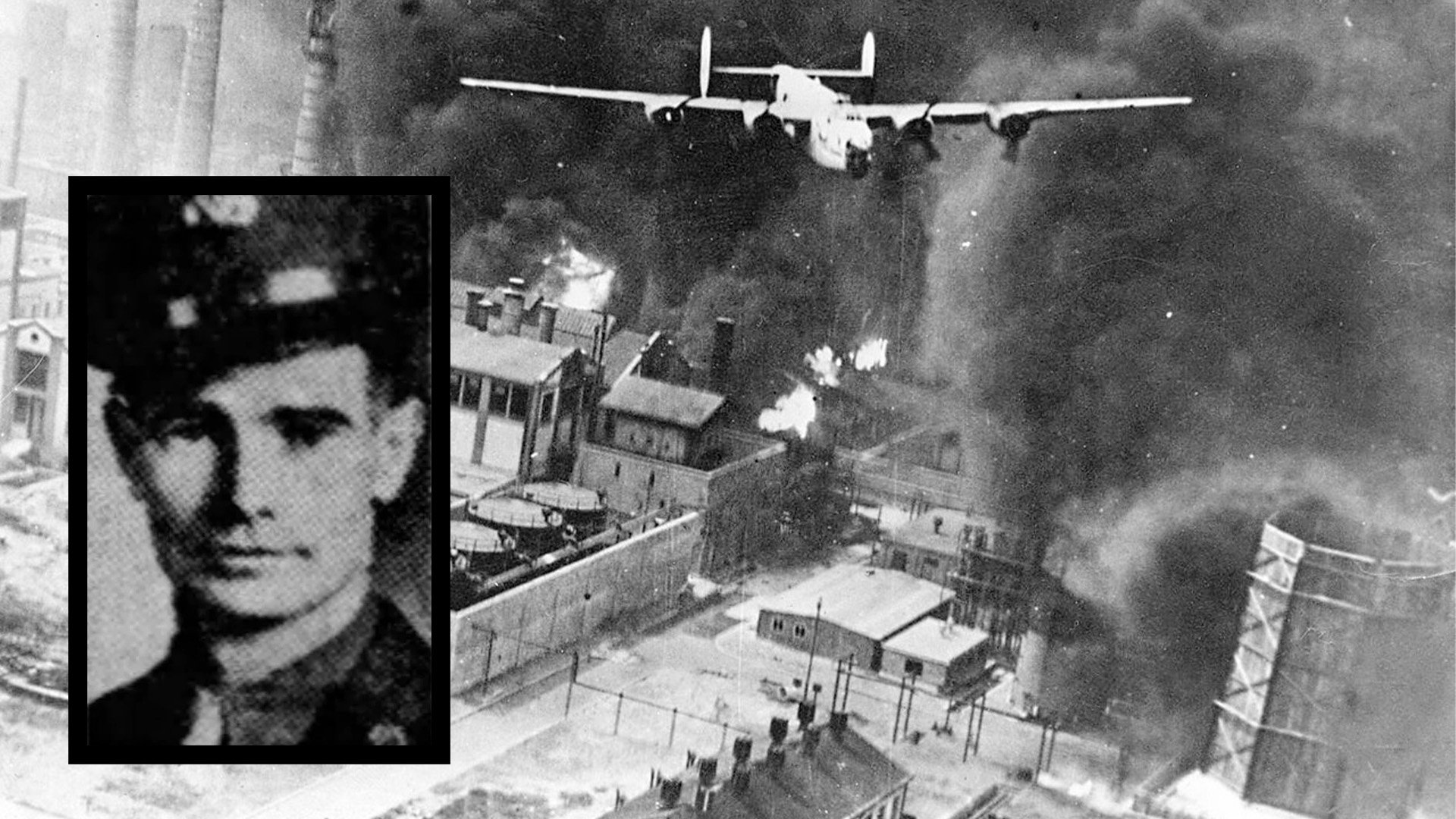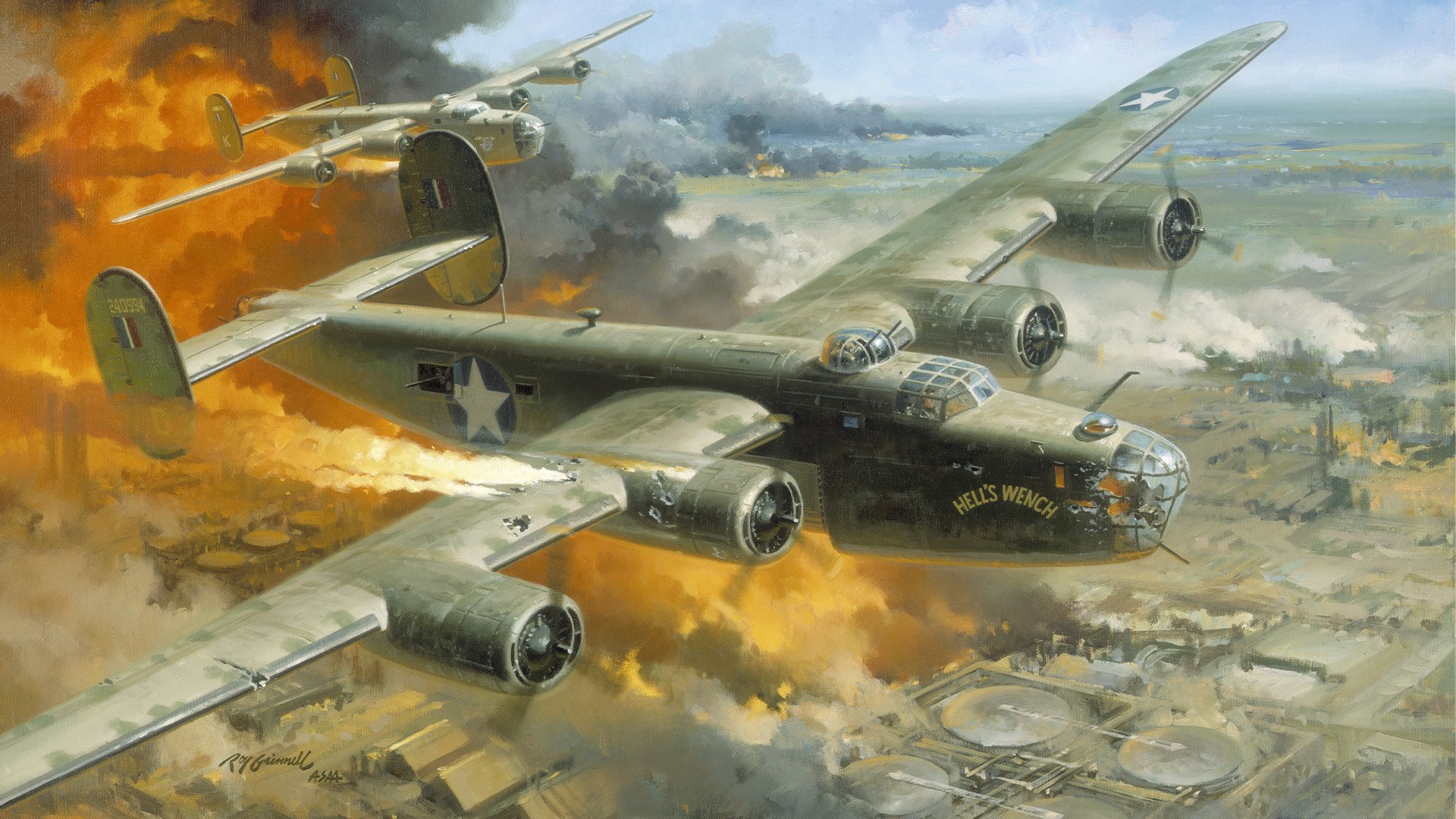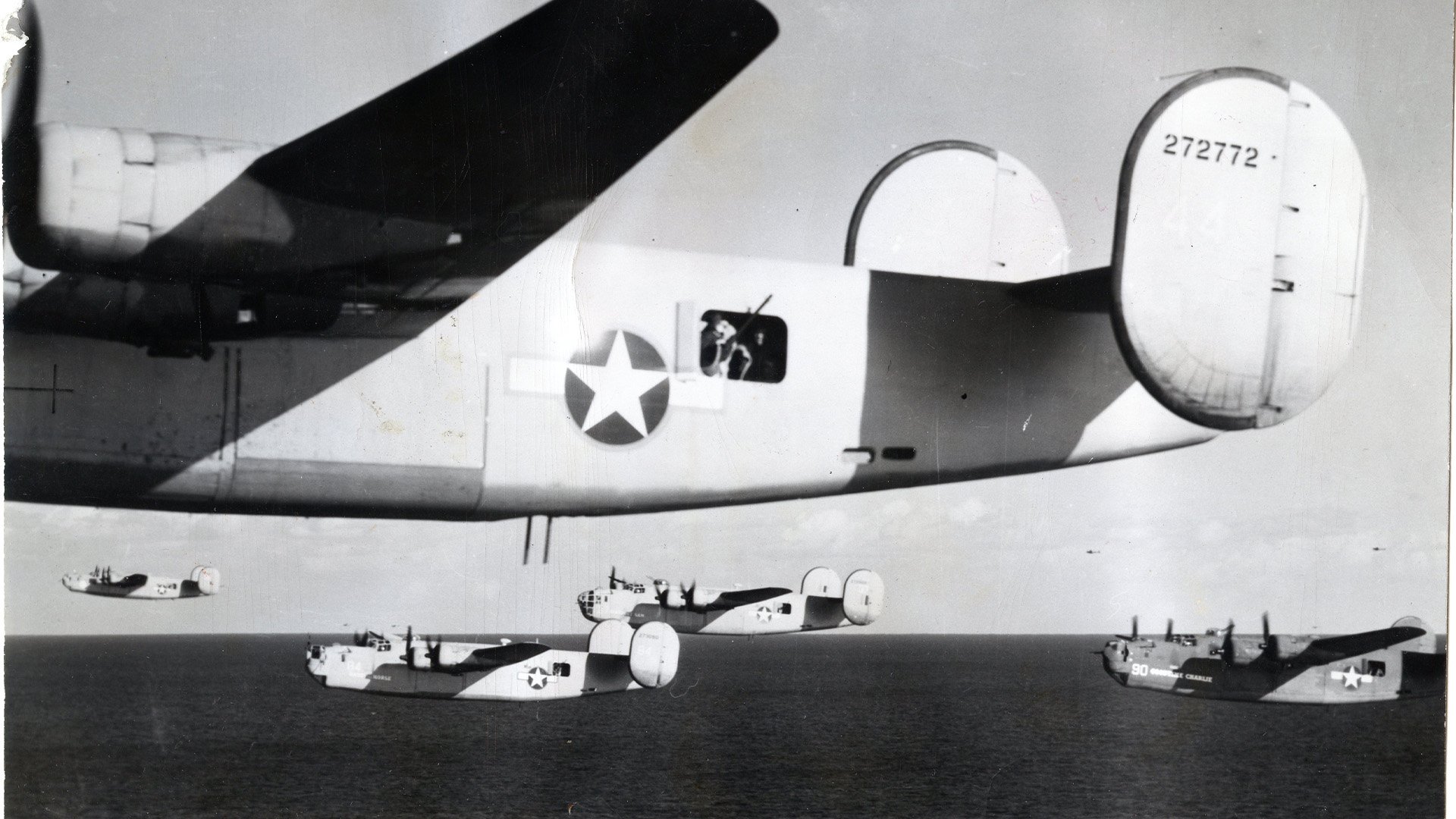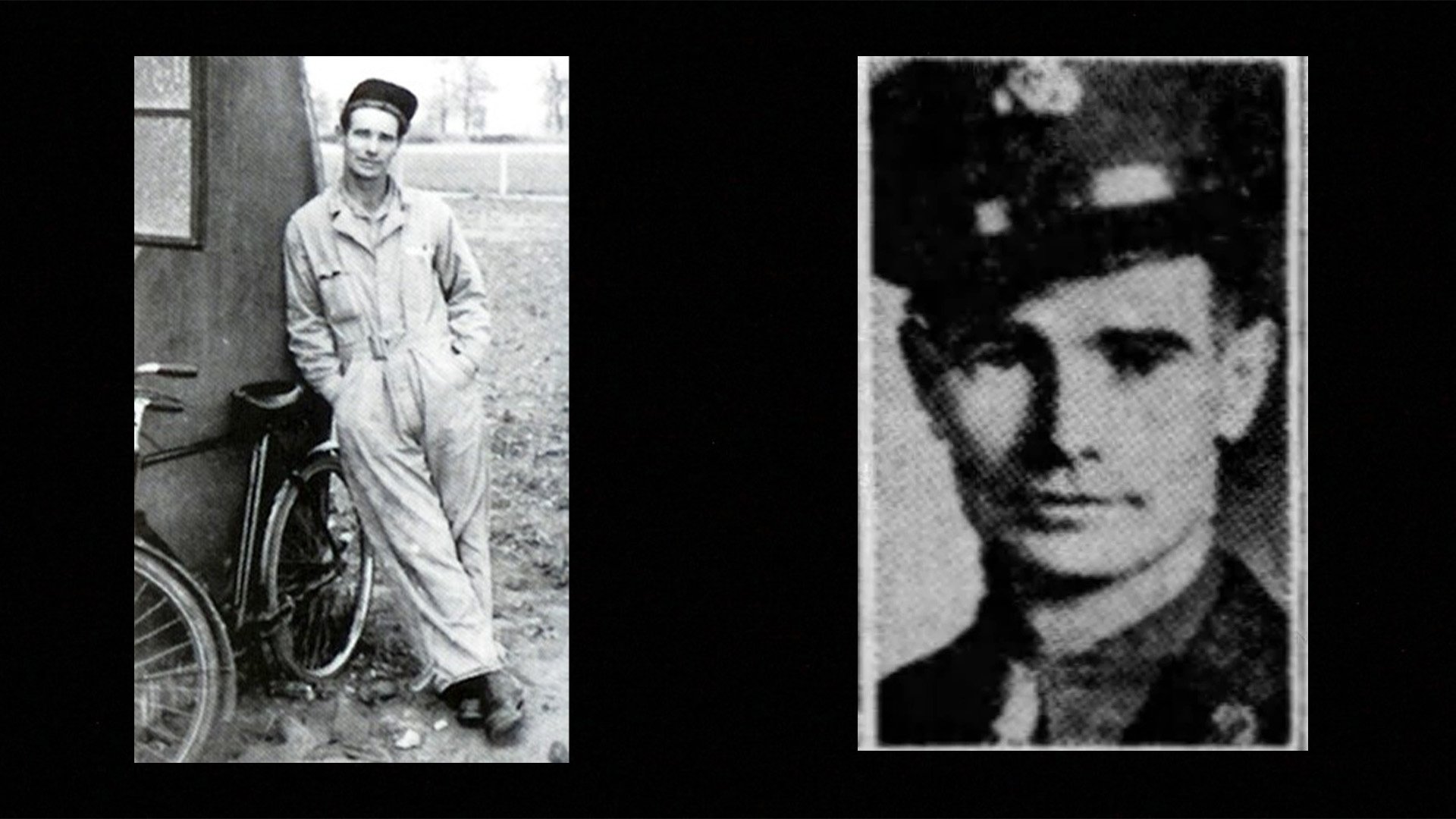
Tech. Sgt. Harold Kretzer died during the bloody 1943 raid on the oil refinery complex at Ploesti, Romania, but on Jan. 6, 2023, the the Defense POW/MIA Accounting Agency announced that his remains had been identified and he'll be buried in Illinois. Coffee or Die Magazine composite.
He never returned from the bloody 1943 raid on the Ploesti oil fields, but Tech. Sgt. Harold Kretzer is finally flying home to Illinois.
On Friday, Jan. 6, the Defense POW/MIA Accounting Agency announced that the remains of the 32-year-old gunner-engineer in the “Flying 8-Balls” of the 66th Bombardment Squadron (Heavy), 44th Bombardment Group (Heavy), 8th Air Force, had been identified by federal researchers four months earlier.
Military officials said he’ll be buried in Springfield, but no date has been slated.
On Aug. 1, 1943, Kretzer’s B-24D Liberator bomber flew more than 1,000 nautical miles from its Libyan airfield in dusty Benghazi, riding low over the island of Corfu and then through the Pindus Mountains, under strict radio silence and without fighter escort, to emerge at the sprawling petroleum refining complex at Ploesti, just north of the Romanian capital of Bucharest.
Some planes were no more than 20 stories in the sky when they aimed for the oil storage tanks, part of the Operation Tidal Wave plan to surprise the defenders.

"Fire over Ploesti," a painting by Roy Grinnell, documents the bloody 1943 raid on the Romanian oil refinery complex. US Air Force image.
But they weren’t surprised.
German code-crackers knew they were coming, and the Luftwaffe had ringed the refineries with anti-aircraft batteries, smoke generators, and balloons tethered with sharp wires, which were designed to slice through a bomber’s aluminum wings.
Flak slashed into the bomb loads of two nearby Liberators, and the shrapnel from their detonations tore into Kretzer’s B-24D, the plane they called “Wing Dinger.”
Two of the Liberator’s aircrew bailed out, but six rode it down to their deaths.
And Wing Dinger became one of the 53 bombers lost during a raid later dubbed “Bloody Sunday” by some, "Black Sunday" by most others.

On Aug. 1, 1943, B-24 Liberators bombers fly low over the Mediterranean Sea, part of a massed raid at low altitude to attack the refinery complex at Ploesti, Romania. US Air Force photo.
Like 79 other bomber crewmen, Kretzer’s body couldn’t be identified, so Romanians buried his remains in the Hero Section of Bolovan Cemetery.
After the war, personnel from American Graves Registration Command dug up the remains there and sent them to either the Ardennes American Cemetery or the Henri-Chapelle American Cemetery for burial in Belgian soil.
In 2017, the Defense POW/MIA Accounting Agency began exhuming the unknowns who died during Operation Tidal Wave, and then sent what was left to the federal laboratory at Offutt Air Force Base in Nebraska to try to figure out who they were.
At Offutt, scientists from the Defense POW/MIA Accounting Agency and the Armed Forces Medical Examiner System used bone, tooth, and mitochondrial DNA (mtDNA) and Y chromosome DNA (Y-STR) analysis to identify Kretzer.

On Friday, Jan. 6, 2023, the Defense POW/MIA Accounting Agency announced that the remains of Tech. Sgt. Harold Kretzer, 32-year-old gunner-engineer in the 66th Bombardment Squadron (Heavy), 44th Bombardment Group (Heavy), 8th Air Force, had been identified by federal researchers four months earlier. Defense POW/MIA Accounting Agency photos.
On Aug. 23, 2022, they officially declared him found.
Kretzer’s name is stenciled on the Tablets of the Missing at the Florence American Cemetery, an American Battle Monuments Commission site in Impruneta, Italy.
But now workers will affix a rosette next to his name, telling mourners that he’s been identified.
Read Next: Warrior 143’s Door Gunner Is Finally Coming Home From Vietnam

Carl Prine is a former senior editor at Coffee or Die Magazine. He has worked at Navy Times, The San Diego Union-Tribune, and Pittsburgh Tribune-Review. He served in the Marine Corps and the Pennsylvania Army National Guard. His awards include the Joseph Galloway Award for Distinguished Reporting on the military, a first prize from Investigative Reporters & Editors, and the Combat Infantryman Badge.
BRCC and Bad Moon Print Press team up for an exclusive, limited-edition T-shirt design!
BRCC partners with Team Room Design for an exclusive T-shirt release!
Thirty Seconds Out has partnered with BRCC for an exclusive shirt design invoking the God of Winter.
Lucas O'Hara of Grizzly Forge has teamed up with BRCC for a badass, exclusive Shirt Club T-shirt design featuring his most popular knife and tiomahawk.
Coffee or Die sits down with one of the graphic designers behind Black Rifle Coffee's signature look and vibe.
Biden will award the Medal of Honor to a Vietnam War Army helicopter pilot who risked his life to save a reconnaissance team from almost certain death.
Ever wonder how much Jack Mandaville would f*ck sh*t up if he went back in time? The American Revolution didn't even see him coming.
A nearly 200-year-old West Point time capsule that at first appeared to yield little more than dust contains hidden treasure, the US Military Academy said.












